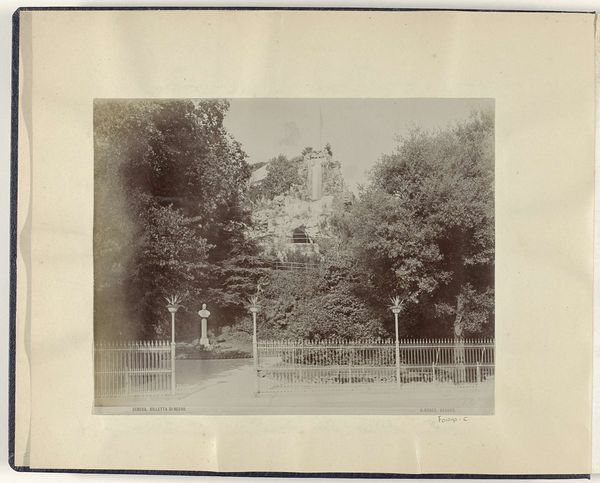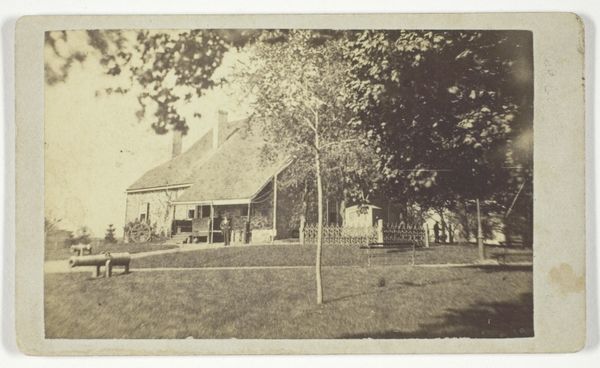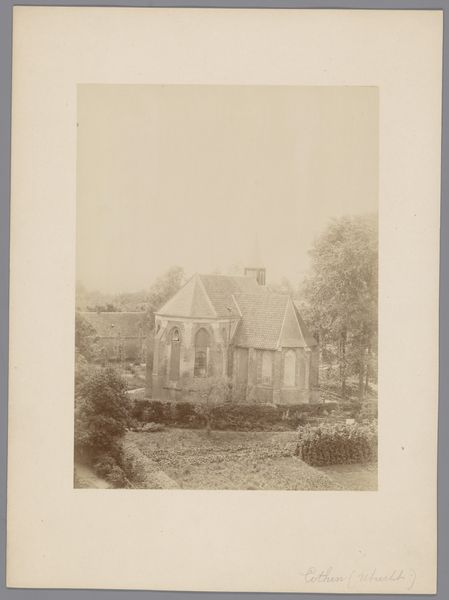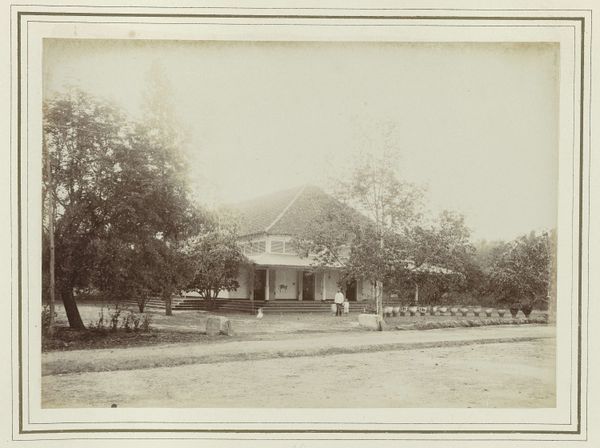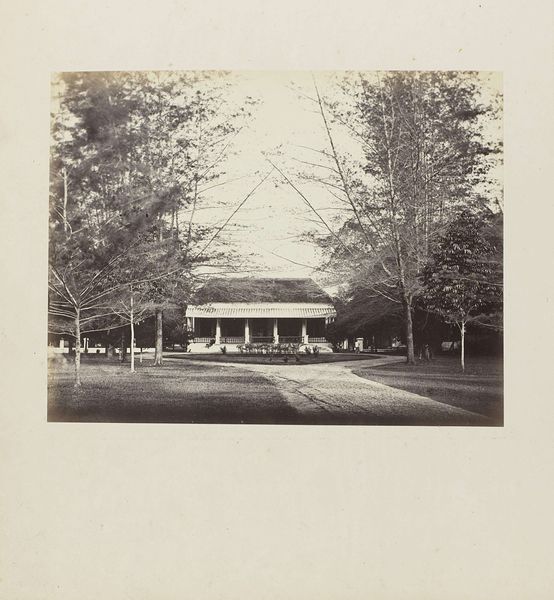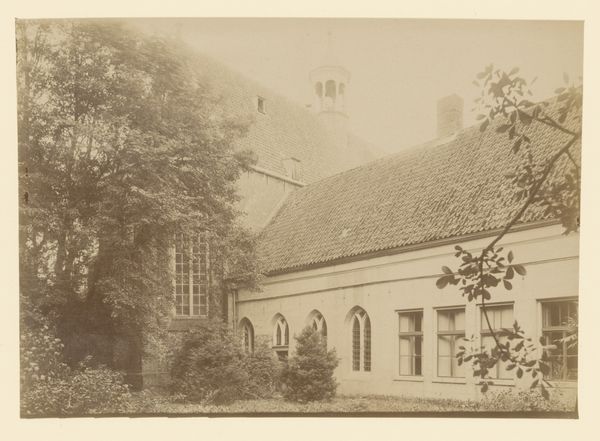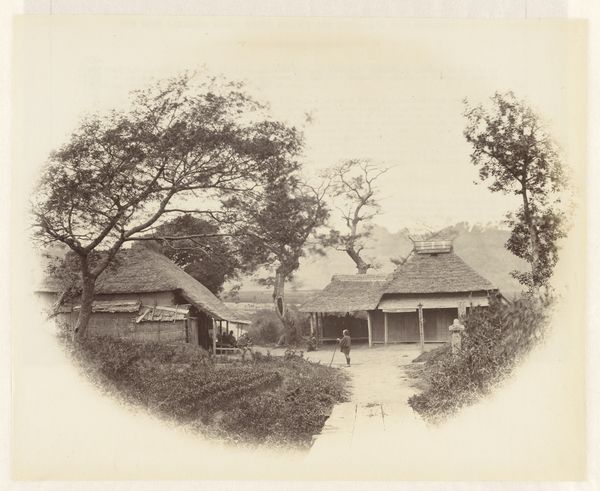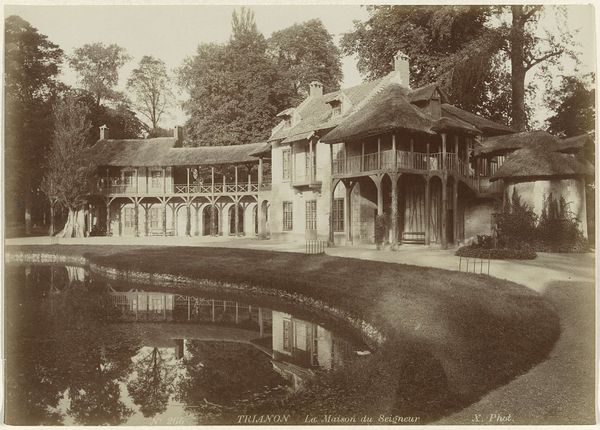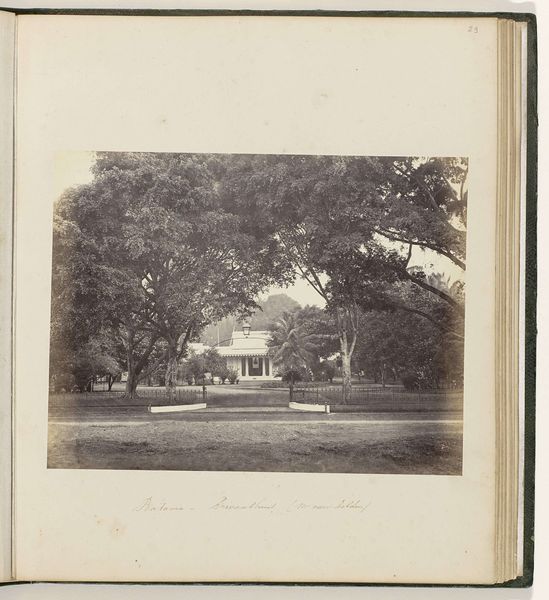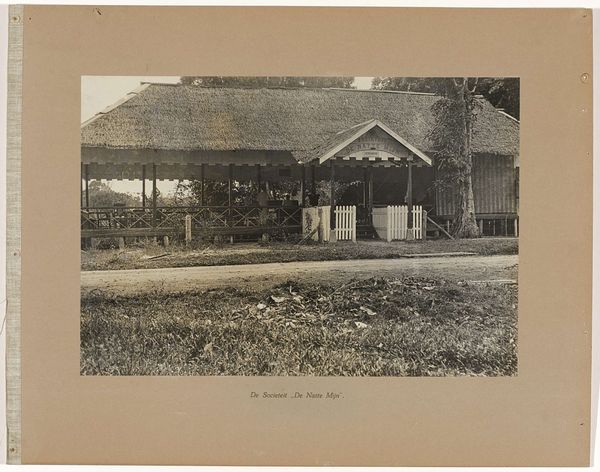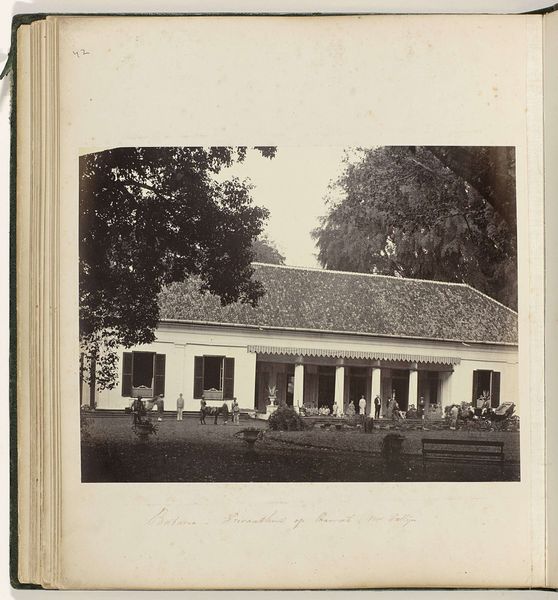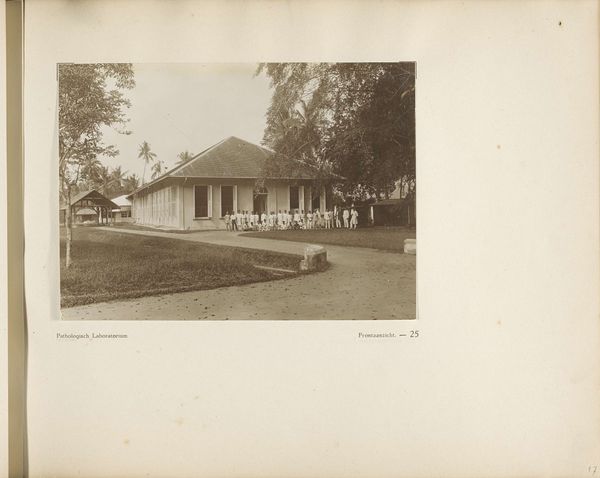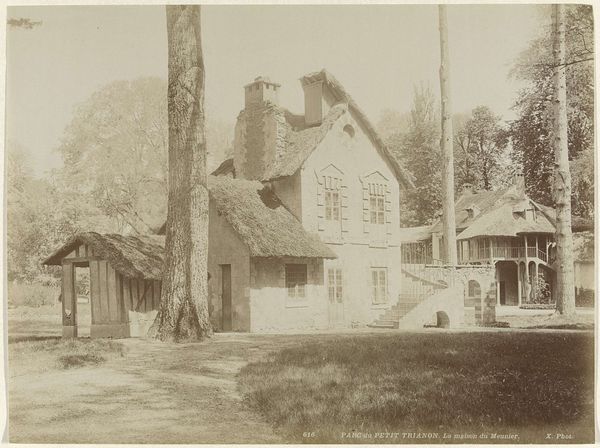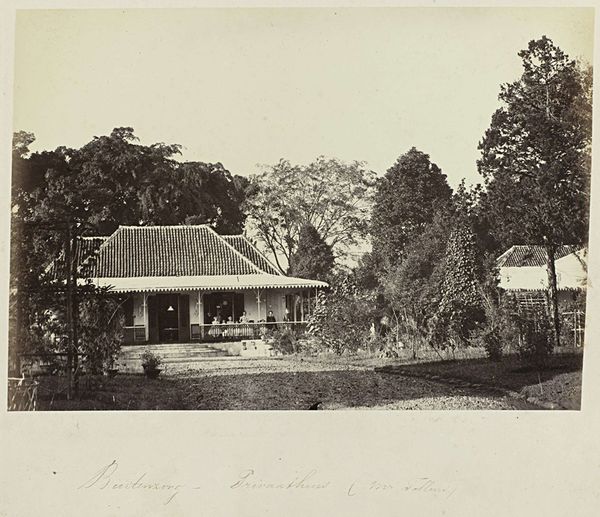
Pagina 41 van fotoboek van de Algemeene Vereeniging van Rubberplanters ter Oostkust van Sumatra (A.V.R.O.S.) c. 1924 - 1925
0:00
0:00
jwmeyster
Rijksmuseum
photography, albumen-print
#
landscape
#
photography
#
orientalism
#
albumen-print
Dimensions: height 240 mm, width 310 mm
Copyright: Rijks Museum: Open Domain
Curator: Looking at "Page 41 from the Photo Album of the General Association of Rubber Planters on the East Coast of Sumatra," dating from around 1924-1925, a very striking visual document. Editor: There's an almost painterly quality to this albumen print, despite the sharpness of the architectural details. The light! How it catches the textured roof and casts subtle shadows. The subdued sepia tone lends the image a palpable stillness. Curator: Indeed. Consider that this was part of a larger corporate project to showcase the achievements, or rather, the infrastructure, of the AVROS rubber plantation. This image functions as a strategic depiction of colonial enterprise. Editor: Ah, so the carefully structured composition, with the building centered and framed by the vegetation, presents a constructed vision of harmony and order then. A visually appealing presentation, emphasizing balance. Curator: Exactly. It reinforces a visual narrative of control and productivity. The architectural style blends with local aesthetics in an intentional way, hinting at acculturation. We mustn’t ignore the inherent power dynamic in choosing to present this cultivated image to stockholders. Editor: You're drawing attention to a very interesting point about cultural representation through selective framing. Yet the image is so compelling. Curator: It’s precisely this aestheticization of colonial labor that's so powerful, it's both subtle and extremely calculated. The visual order normalizes unequal relationships. Editor: Looking again, knowing what I now know, the winding path no longer seems quite so innocent, the image overall evokes a subtle, unnerving quiet. Thank you, it definitely adds layers to understanding the construction of the artwork itself. Curator: Yes, it's vital to remember that even landscapes are rarely neutral spaces, particularly when immortalized and circulated through photography tied to commerce and imperialism.
Comments
No comments
Be the first to comment and join the conversation on the ultimate creative platform.
